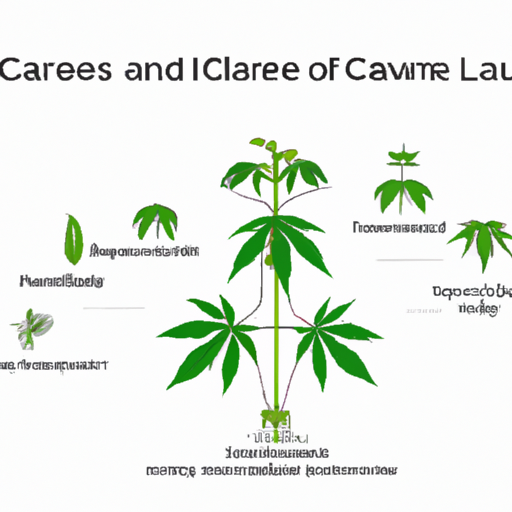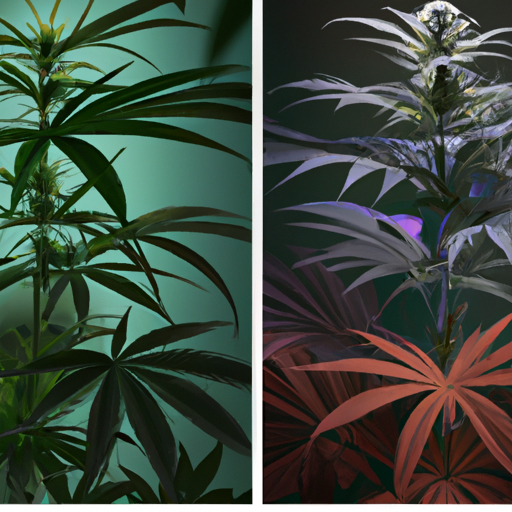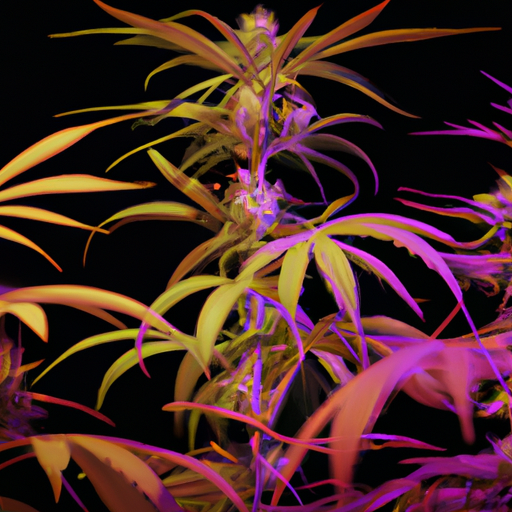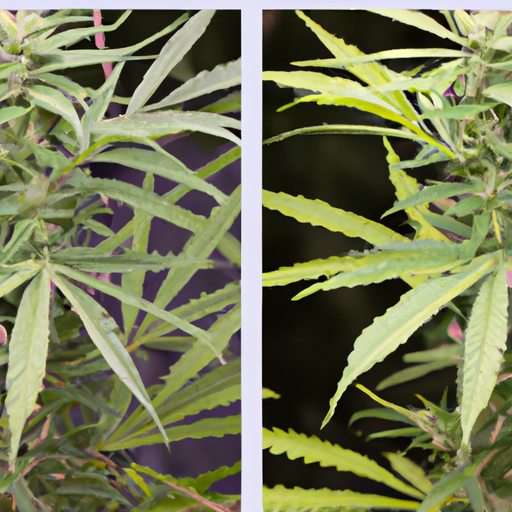This guide aims to impart detailed knowledge about the importance of light schedules in the vegetative stage of cannabis plants. The vegetative stage is crucial for the overall growth and output of the cannabis plant, and light schedules play a monumental role in it. It will cover the essentials of mastering the vegetative stage, the impact of light on cannabis plants, and how to adjust light schedules for optimal growth.
Understanding the Cannabis Vegetative Stage: What Does it Mean?
The cannabis vegetative stage refers to the growth phase of the cannabis plant where it focuses on developing its foliage and root system. This stage occurs after the seedling stage and before the flowering stage. During this period, the plant undergoes rapid growth and establishes a strong foundation for future bud production.
In the vegetative stage, the plant's primary goal is to build a robust structure and accumulate energy through photosynthesis. This is achieved by providing the plant with optimal conditions, including proper lighting, nutrients, and a suitable environment.
During this stage, the plant produces large fan leaves and branches as it stretches upwards towards the light source. The root system also expands, allowing the plant to absorb more water and nutrients from the soil. The length of the vegetative stage can vary depending on the desired size of the plant.
Understanding the cannabis vegetative stage is crucial for maximizing the plant's growth potential. It sets the stage for healthy and vigorous flowering, which ultimately leads to higher yields. By providing the plant with the right conditions during this stage, growers can ensure that their plants develop strong and sturdy structures, capable of supporting heavy buds during the flowering stage.
Proper management of the vegetative stage involves maintaining an appropriate light schedule, providing the right nutrients, and monitoring environmental factors such as temperature and humidity. By understanding the specific needs of the plant during this stage, growers can effectively promote healthy growth and ensure a successful harvest.

A diagram showing the life cycle of cannabis, highlighting the vegetative stage
The Role of Light in Cannabis Growth: Is it Really That Important?
Light plays a crucial role in the growth and development of cannabis plants. It serves as the primary source of energy for photosynthesis, the process through which plants convert light into chemical energy. This energy is then used to fuel various metabolic processes necessary for plant growth.
Light not only provides energy but also influences the plant's morphology and physiological processes. The quality, intensity, and duration of light directly impact the plant's growth rate, leaf development, branching, and overall plant structure.
Different wavelengths of light have varying effects on plant growth. Blue light, for example, is essential for promoting vegetative growth, while red light stimulates flowering. By providing the right balance of light wavelengths during the vegetative stage, growers can control the growth patterns and direct the plant's energy towards the desired outcomes.
In addition to its energy-providing role, light also serves as a crucial environmental cue for cannabis plants. It helps regulate important processes such as the opening and closing of stomata, which control gas exchange and water loss. Light also influences the production of hormones, such as auxins, gibberellins, and cytokinins, which play significant roles in plant growth and development.
Without adequate light, cannabis plants may exhibit stunted growth, elongated stems, and sparse foliage. Insufficient light can also lead to weak plants that are more susceptible to diseases and pests. On the other hand, providing the right amount and quality of light can result in robust, healthy plants with vigorous growth and optimal bud production.
"The more light, the better?" Debunking Cannabis Light Myths
Contrary to popular belief, the notion that "the more light, the better" is not always true when it comes to cannabis growth. While light is indeed crucial for healthy plant development, providing excessive light can actually have detrimental effects on your cannabis plants.
One common misconception is that increasing light intensity will result in faster growth and higher yields. However, cannabis plants have an optimal light saturation point, beyond which additional light does not provide any additional benefit. In fact, excessive light can lead to photobleaching, where the leaves become pale and yellow due to excessive chlorophyll breakdown. This can impair photosynthesis and hinder overall plant growth.
Another myth is that 24/7 lighting during the vegetative stage will maximize growth. While cannabis plants do require a significant amount of light during this stage, they also need a period of darkness for proper rest and recovery. Just like humans, plants have a circadian rhythm that regulates their physiological processes. Providing a period of darkness allows the plants to undergo essential metabolic activities and promote healthy growth.
Moreover, excessively long light periods can increase the risk of heat stress and nutrient deficiencies. Heat generated by intense lights can accumulate in the growing environment, causing temperature spikes that can harm the plants. Additionally, prolonged light exposure can lead to nutrient imbalances, as the plants may not have enough time to properly absorb and utilize the nutrients.
It is important to strike a balance when it comes to light schedules for cannabis. Providing the right amount of light, at the appropriate intensity and duration, is key to achieving optimal growth and yields. Carefully monitoring and adjusting the light schedule based on the specific needs of your plants will ensure they receive the ideal amount of light for healthy and robust development.

A comparative image of cannabis plants grown under different light schedules
Optimal Light Schedules for Cannabis Vegetative Stage: How to Get it Right?
When it comes to setting up the perfect light schedule for the cannabis vegetative stage, several factors need to be considered. These include the type of light source, the desired growth rate, and the strain being cultivated.
A commonly recommended light schedule for the vegetative stage is 18 hours of light followed by 6 hours of uninterrupted darkness. This mimics the long days of summer and provides the plants with ample light for photosynthesis and growth. However, some growers opt for a slightly shorter light period of 16 hours to save on energy costs without compromising plant development.
It is important to note that the intensity of light also plays a significant role in cannabis growth. During the vegetative stage, a light intensity of around 400-600 micromoles per square meter per second (µmol/m²/s) is generally recommended. This level of intensity ensures that the plants receive enough light to fuel their growth without causing any stress or damage.
Additionally, the distance between the light source and the canopy should be carefully monitored. As the plants grow taller, adjusting the height of the lights ensures that the plants receive an even distribution of light. This prevents any shading or light burn that can occur if the lights are too close or too far away from the plants.
Finally, it is crucial to maintain a consistent light schedule throughout the vegetative stage. Sudden changes in light duration or intensity can shock the plants and disrupt their growth patterns. Gradual adjustments can be made as the plants progress through different stages, but abrupt changes should be avoided.
The Impact of Incorrect Light Schedules: What Could Possibly Go Wrong?
Incorrect light schedules during the cannabis vegetative stage can have detrimental effects on plant growth and overall health. One of the main issues that can arise is stunted growth. Insufficient or excessive light can cause the plants to become leggy and elongated, while also inhibiting the development of strong and healthy stems. This can lead to weak and fragile plants that are more prone to disease and pest infestations.
Another consequence of incorrect light schedules is poor leaf development. Inadequate light can result in small and pale leaves, lacking in chlorophyll and unable to efficiently carry out photosynthesis. On the other hand, excessive light can cause leaf burn, characterized by brown or yellow patches on the leaves. This damage can reduce the plant's ability to produce energy and can even lead to the death of leaves.
Furthermore, incorrect light schedules can disrupt the plant's hormonal balance. The duration and intensity of light exposure play a crucial role in regulating the production of hormones that control growth and flowering. Inconsistent or erratic light schedules can confuse the plants, leading to irregular growth patterns, delayed flowering, or even the complete absence of flowering.
It is also important to note that incorrect light schedules can have a negative impact on the overall yield of the plants. Insufficient light can result in smaller bud development and lower resin production, leading to reduced potency and quality of the final product. Similarly, excessive light can cause the plants to divert excessive energy towards vegetative growth, resulting in fewer and smaller buds.

A photo of cannabis plants affected by incorrect light schedules
"Adjustments are key" – The Art of Modifying Light Schedules
Making adjustments to light schedules during the cannabis vegetative stage is an essential skill for growers seeking optimal growth and development. There are several factors to consider when modifying light schedules, including duration, intensity, and light spectrum.
- 1. Duration:
Adjusting the duration of light exposure can have a significant impact on plant growth. Increasing the number of light hours per day can promote faster vegetative growth, while reducing light hours can encourage the plants to transition into the flowering stage. It is important to gradually adjust the duration to avoid shocking the plants and to mimic natural daylight patterns as closely as possible. - 2. Intensity:
The intensity of light is another crucial factor to consider. Young cannabis plants typically require lower light intensities to prevent leaf burn, while more mature plants can tolerate higher intensities. It is essential to monitor the distance between the light source and the canopy to ensure optimal light penetration and avoid excessive heat buildup. - 3. Light Spectrum:
The spectrum of light also plays a role in modifying light schedules. During the vegetative stage, plants benefit from a higher proportion of blue light, which promotes vegetative growth and leaf development. However, it is important to gradually introduce red light as the plants approach the flowering stage to stimulate bud development.Regular monitoring and observation of the plants' response to the adjusted light schedules is crucial. Growers should pay attention to signs of stress, such as leaf discoloration or wilting, and make further adjustments accordingly. Keeping detailed records of the changes made to the light schedules and their effects on plant growth can help refine future adjustments and improve overall cultivation practices.
Real-Life Success Stories: How Correct Light Schedules Transformed Cannabis Growth?
Implementing correct light schedules during the cannabis vegetative stage has proven to be a game-changer for many growers. Numerous real-life success stories highlight the transformative effects of optimizing light schedules on cannabis growth and yield.
One grower, John, noticed a significant improvement in his plants' growth when he adjusted the light duration from 18 hours to 20 hours during the vegetative stage. This simple change resulted in faster and healthier vegetative growth, with larger and more vigorous plants overall. John's experience demonstrates the importance of fine-tuning the duration of light exposure to fully harness the plants' growth potential.
Another success story comes from Sarah, who experimented with adjusting the light intensity during the vegetative stage. By gradually increasing the intensity over time, Sarah observed denser foliage and more robust stems. The higher light intensity stimulated the plants to develop a stronger structure, ultimately leading to higher yields during the flowering stage. Sarah's experience exemplifies the impact that carefully adjusting light intensity can have on cannabis growth and plant resilience.
Furthermore, Mark, an experienced grower, took a scientific approach to modifying the light spectrum during the vegetative stage. By incorporating specific ratios of blue and red light, Mark achieved remarkable results. The plants exhibited vigorous growth, with lush green leaves and an abundance of lateral branches. Mark's success story highlights the importance of considering the light spectrum and how it can be tailored to optimize specific growth characteristics.

Before and after pictures of cannabis plants with correct light schedules
Light Schedules for Optimal Cannabis Growth:
| Light Schedule | Light Cycle | Plant Stage | Effect |
|---|---|---|---|
| 18/6 | 18 hours of light and 6 hours of darkness | Vegetative | Promotes bushy growth |
| 17/7 | 17 hours of light and 7 hours of darkness | Vegetative | Stimulates flowering |
| 20/4 | 20 hours of light and 4 hours of darkness | Vegetative | Encourages vigorous growth |
| 12/12 | 12 hours of light and 12 hours of darkness | Vegetative | Initiates flowering |
Mastering the vegetative stage of cannabis growth through optimal light schedules is critical for yielding a healthy and robust plant. Manipulating light schedules accurately can significantly enhance the growth and productivity of cannabis. Understanding and implementing the concepts discussed in this guide will pave the way for successful cannabis cultivation.





